minimization of risks and the long-term effectiveness of asset ownership. By choosing professional support, entrepreneurs and executives receive not just registration but a tool for growth, protection and business scaling.
Registration of an aircraft is the official entry of data about the aircraft and its owner into the state aviation register, which ensures recognition of ownership rights, legitimacy of operations and access to international routes. Similarly, registration of a ship or seagoing vessel implies its record in a national or international register, confirmation of ownership rights and compliance with maritime law requirements.
In international practice, the foundation for state registration of aircraft is the Chicago Convention of 1944, which regulates identification standards, certificates of airworthiness (CoA), technical certification and integration with ICAO aviation systems. For ships, the key normative act is the United Nations Convention on the Law of the Sea (UNCLOS), which defines the status of the ship, the flag, registration of rights and transactions with it.
The role of aviation regulators — national civil aviation agencies (EASA, FAA, CAAC, GCAA, etc.) — is to control the registration procedure, issue certificates, and ensure compliance with international safety standards and technical requirements. For ships, a similar function is performed by national maritime administrations and class societies (Lloyd’s Register, DNV GL, Bureau Veritas).
The practice of COREDO confirms: despite the similarity of basic principles, the registration of aircraft and ships differs in the structure of procedures, requirements for technical certification, licensing and legal support. For example, for aircraft the integration with the aviation register and obtaining a CoA is critical, while for ships it is the issuance of ship documentation, crew licensing and compliance with international maritime law.
Registration of an aircraft
Registration of an aircraft: it is a crucial process that ensures the entry of an aircraft into the aviation register of a specific state, which is necessary for its legal operation. This process includes obtaining a registration mark that identifies the aircraft and is mandatory for all civil aircraft under international agreements. Below the main aspects and stages of aircraft registration will be considered.
A real COREDO case: registration of a business jet for a European charter company in the Czech Republic.
1. Document preparation
– Formalization of ownership of the aircraft, confirmation of the legality of the source of funds (KYC, AML dossier, bank statements).
– Preparation of technical documentation: manufacturer’s certificate, maintenance program, minimum equipment list (MEL).
– Agreement of the legal address of the owner and the capital structure of the owning company.
2. Submission of the application and registration in the aviation register
– The application is submitted to the national aviation register (for example, Czech Civil Aviation Authority).
– Entry of data about the aircraft, the owner, technical specifications, attaching documents.
3. Obtaining the aircraft identification registration mark
– A unique registration mark is assigned, complying with ICAO standards and national requirements.
– Application of the mark to the aircraft’s fuselage, a mandatory step controlled by aviation regulators.
4. Issuance of the Certificate of Airworthiness (CoA) and technical certification
– Conducting an inspection of the aircraft, checking compliance with technical standards, maintenance programs and the MEL.
– Obtaining the CoA, which confirms the possibility of operating the aircraft in international airspace.
5. security audit and compliance with international standards
– Integration of aircraft data into international aviation systems (ICAO, EASA).
– Verification of compliance with the Chicago Convention requirements, safety standards and technical documentation.
The solution developed by COREDO makes it possible to organize the aircraft registration procedure taking into account the nuances of each jurisdiction, minimize timeframes and ensure the legal clarity of the transaction.
Aircraft registration for business
The following aspects are critical for companies that own aircraft:
– Requirements for capital structure
– In Europe and Asia, disclosure of capital structure, funding sources and beneficial ownership transparency is often required.
– Implementation of AML procedures and confirmation of the legality of the source of funds is a mandatory stage.
– Aircraft registration for charter and private companies
– For charter companies, integration with a commercial air transport license and compliance with safety and insurance standards are important.
– Private owners face requirements for maintenance, crew flight training programs and long-term asset management.
– Legal support for registration
– COREDO’s practice has shown that comprehensive legal support: from document preparation to integration with international registers, is critical for minimizing risks and successfully passing inspections.
Vessel registration: key steps and aspects
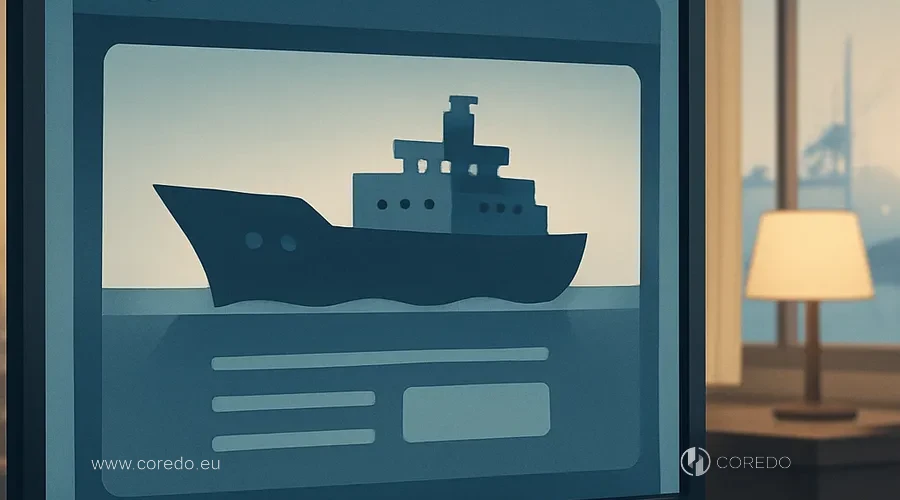
Registration of maritime vessels includes:
1. Establishing ownership rights and preparing documentation
– Proof of ownership, capital structure, legal address of the owner.
– Technical documentation, certificates confirming the vessel’s compliance with international standards (SOLAS, MARPOL).
2. Submission of an application to the national maritime registry
– Registration of the vessel in a national or international register (for example, Cyprus Ship Registry, UK Ship Register).
– Obtaining a ship number, obtaining licenses for the crew and operation.
3. Features of registration in international waters and jurisdictions of Europe, Asia, Africa
– In Europe, strict requirements for documentation, safety, and environmental standards.
– In Asia: procedural flexibility, but variations in national standards and requirements for capital structure.
– In Africa: fast registration, low cost, but limited international recognition.
4. Legal aspects of ownership and transactions involving maritime vessels
– Execution of sale, rental, and leasing agreements for vessels.
– Legal support for registration, integration with international maritime systems.
5. Licensing and registration of ship documents
– Obtaining an operating license, preparing ship documents that confirm the right to sail under a specific flag.
The COREDO team has implemented projects for the registration of maritime vessels in Cyprus, Estonia and the UAE, integrating legal and technical procedures to ensure international recognition and safety.
Jurisdictions for registering aircraft and ships
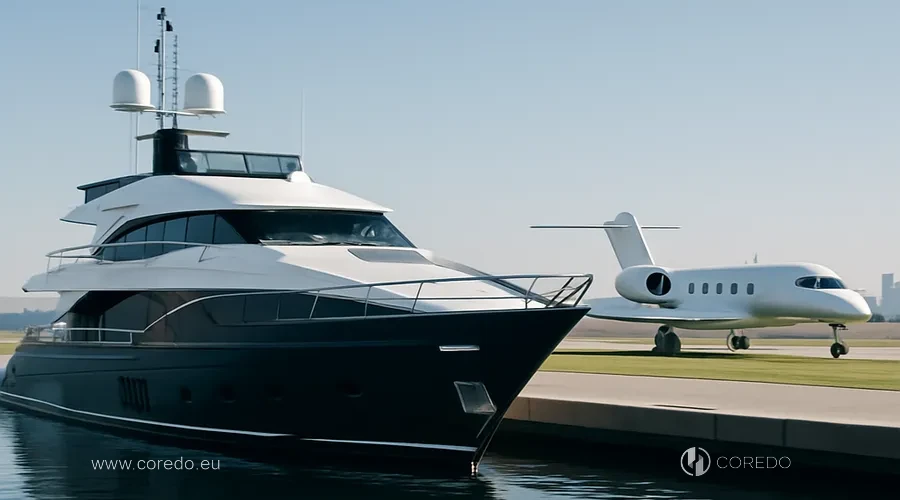
choice of jurisdiction for registering aircraft and ships – is a strategic decision that determines not only the legal status but also the conditions of operation, taxation and international recognition of your vessel or aircraft. Each registry offers its own set of advantages and limitations, so when choosing it is important to consider a range of criteria and the specific characteristics of different jurisdictions.
Criteria for choosing the product
– Tax aspects
– Corporate tax rate, availability of tax incentives, transparency of the tax system.
– Legal flexibility
– Ability to structure capital, minimal requirements for authorized capital, confidentiality of owner data.
– International recognition of the registration
– Jurisdiction status in ICAO, IMO, integration with international aviation and maritime systems.
Registration in Europe, Asia, Africa and offshore zones
– Europe
– High level of international recognition, strict documentation requirements, lengthy registration times.
– Asia
– Procedural flexibility, tax incentives, a variety of national safety standards.
– Africa
– Fast registration, low cost, limited international recognition.
– Offshore zones
– Confidentiality, minimal taxes, simplicity of the procedure, but legal risks and limited market access.
See the next section for more details on the advantages and limitations of offshore registration.
Offshore registration of aircraft: pros and cons
Offshore registration of aircraft allows reducing the tax burden, simplifying the ownership procedure and ensuring beneficiary confidentiality. At the same time, COREDO’s practice shows: insufficient transparency, limited recognition of the registration and difficulties integrating into international aviation systems can become a barrier to scaling the business.
How registration affects flexibility and flights
A properly chosen jurisdiction provides:
– The ability to conduct international flights without restrictions.
– Simplified obtaining of flight permits and integration with global aviation systems.
– Flexibility in managing the fleet, scaling the business and optimizing operating expenses.
| Jurisdiction | Advantages | Registration features
| Risks and limitations | |||
|---|---|---|---|
| Europe | International recognition, safety | Strict documentation requirements | High taxes, long timeframes |
| Asia | Flexibility, tax incentives | Variety of national regulations | Different safety standards |
| Africa | Fast registration, low cost | Less bureaucracy | Limited international recognition |
| Offshore zones | Confidentiality, minimal taxes | Quick and simple procedure | legal risks, limited market access |
Legal risks in vessel registration and management
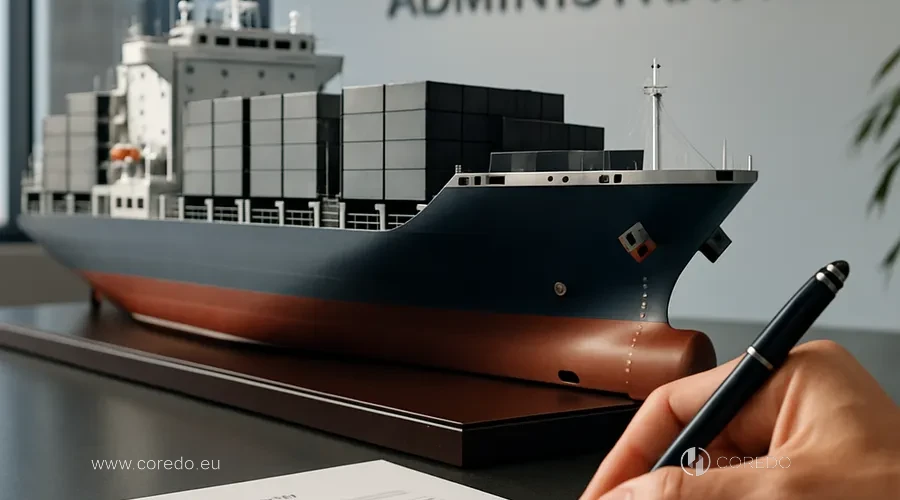
Legal risks in vessel registration and management encompass a range of issues related to the choice of jurisdiction, the legal regime of operation, and the preparation of proper documentation. Proper registration is not just a formality but a strategic decision that directly affects safety, financial obligations, and the protection of your interests at the international level.
When analyzing the key legal risks, it becomes clear how important it is to comply with all legal requirements at every stage of a vessel’s registration and operation.
Main legal risks
– Errors in document preparation and failure to follow registration procedures can lead to denial of ownership recognition, inability to operate the vessel, fines, and litigation.
– Non-compliance with AML/KYC requirements – asset freezes, refusal of registration, reputational risks.
– Violation of international safety standards: prohibition of international flights, revocation of certificates, insurance restrictions.
How to minimize risks
– Comprehensive legal support for registration, from document verification to integration with international registries.
– Implementation of AML/KYC procedures, verification of the legality of the source of funds.
– Conducting a preliminary technical inspection, auditing maintenance programs and MEL.
COREDO’s practice confirms: thorough document preparation, cooperation with aviation and maritime regulators, and integration with international systems are the key to minimizing legal and operational risks.
Impact of registration on insurance risks
– A registered aircraft or vessel gains access to international insurance programs, lowers insurance costs, and increases asset protection.
– Registration ensures the legal clarity of the transaction, transparency of ownership, and legitimacy of operations.
Violations and penalties under the law
– Refusal of registration, prohibition of operation, annulment of certificates.
– Financial losses, litigation, asset freezes.
– Reputational risks and restricted access to international markets.
Requirements and safety standards for vessel registration
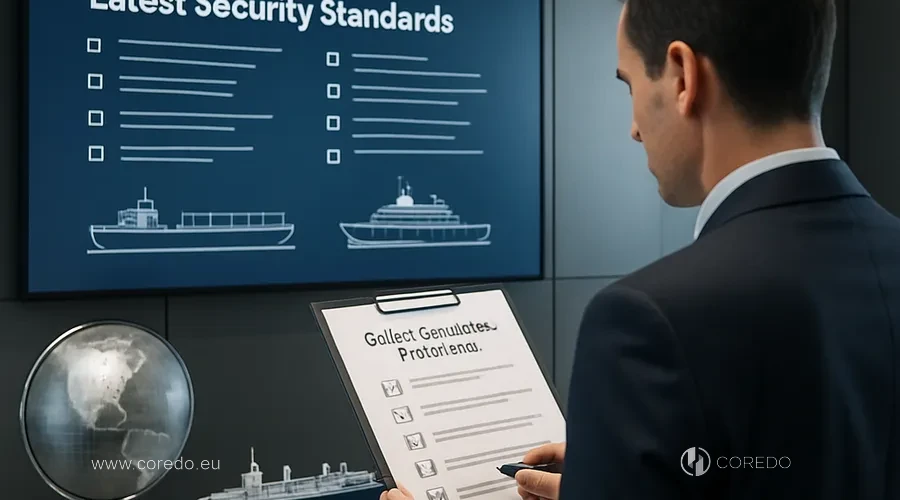
Requirements and safety standards for vessel registration define which technical and legal rules must be followed for the legal operation of any vessel in Russian waters. Proper registration and compliance with established requirements affect not only the legality of ownership, but also navigational safety, as well as the vessel owner’s responsibility before regulatory authorities. In the following sections we will review the key aspects of technical certification and regular maintenance.
Technical certification and maintenance: what you need to know
– Conducting a technical inspection of the vessel, auditing maintenance programs, compliance with manufacturer requirements.
– Implementation of an aircraft maintenance program, regular checks, updating the MEL.
What is the Minimum Equipment List (MEL)?
– MEL – a document defining the minimally required equipment for the safe operation of an aircraft.
– Compliance with the MEL is a mandatory condition for obtaining an airworthiness certificate and permission for international flights.
Compliance with aviation safety standards and the Chicago Convention
– Integration with international aviation systems (ICAO, EASA), compliance with the requirements of the Chicago Convention.
– Obtaining an airworthiness certificate confirming the technical and operational safety of the aircraft.
Procedures for aviation regulator inspections
– Conducting inspections, auditing technical documentation, checking maintenance programs.
– Interaction with national and international aviation regulators to obtain approvals and integration into the registry.
Registration of aircraft and vessels: finance and law
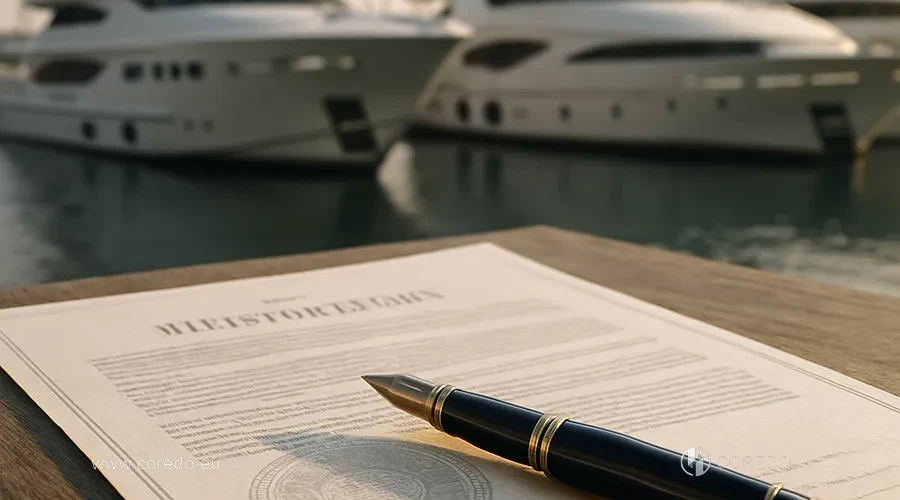
Registration of aircraft and vessels: not only a matter of ownership law, but also a crucial stage that directly affects a business’s financial burden. Registration specifics, choice of jurisdiction and applicable tax regimes determine how profitable and protected the ownership and operation of these assets will be.
Registration and business tax burden
– Registration in an optimal jurisdiction allows reducing the tax burden, accessing tax incentives and increasing financial profitability.
– Operating expenses, insurance costs, and maintenance expenses directly depend on the chosen jurisdiction and the quality of registration.
Registration of aircraft for business and ROI
– ROI (Return on Investment), a key indicator of the effectiveness of registering an aircraft or vessel.
– Correct registration ensures long-term ownership, cost reduction, and increased investment attractiveness of the company.
Corporate governance and capital structure
– A transparent capital structure, disclosure of beneficiaries, and compliance with AML/KYC requirements: mandatory conditions for successful registration.
– Registration of aircraft and vessels affects corporate governance, development strategy and business scaling opportunities.
Scaling and fleet management
– Registration of new aircraft, integration with international systems, optimization of capital structure, fleet scaling tools.
– COREDO’s practice has shown that strategic management of the registration process makes it possible to rapidly expand the fleet, enter new markets and minimize operational risks.
Key recommendations for successful registration
Key recommendations for successful registration help avoid common mistakes, speed up the processing, and increase the chances of a positive outcome. To make the procedure as effective as possible, it is important to prepare all necessary documents in advance and pay careful attention to the details of each step.
Checklist of documents and procedures
– Documents proving ownership.
– AML/KYC dossier, confirmation of the legality of the source of funds.
– Technical documentation, maintenance program, MEL.
– Application to the aviation or maritime registry, obtaining a registration mark.
– Certificate of airworthiness (for aircraft), operating licenses (for ships).
– Documents confirming the capital structure and the owner’s legal address.
Legal support for transactions
– Comprehensive registration support: from document preparation to integration with international systems.
– Audit of capital structure, implementation of AML/KYC procedures, verification of technical documentation.
– Interaction with aviation and maritime regulators, obtaining permits and certificates.
How to choose a jurisdiction for business
– Evaluate the tax burden, documentation requirements, and the level of international recognition.
– Analyze options for fleet scaling, integration with global systems, and obtaining insurance and financial benefits.
Tips for minimizing risks and long-term ownership
– Implement AML/KYC procedures, conduct audits of documents and technical inspections.
– Conclude transactions involving aircraft and ships only with legal support.
– Integrate registration with international aviation and maritime systems to ensure recognition and safety.
Integration with aviation and maritime systems
– Include the vessel’s data in international registers ICAO, IMO, EASA.
– Obtain certificates of airworthiness and operating licenses confirming compliance with international standards.
– Use modern technologies to optimize the registration process, automate document management, and manage risks.
Registration of aircraft and ships is not a formality but a strategic tool for international business, requiring a comprehensive approach to legal, technical and financial aspects. COREDO’s experience shows: only the integration of professional support, in-depth analysis of jurisdictions and the adoption of best international practices ensures successful registration,